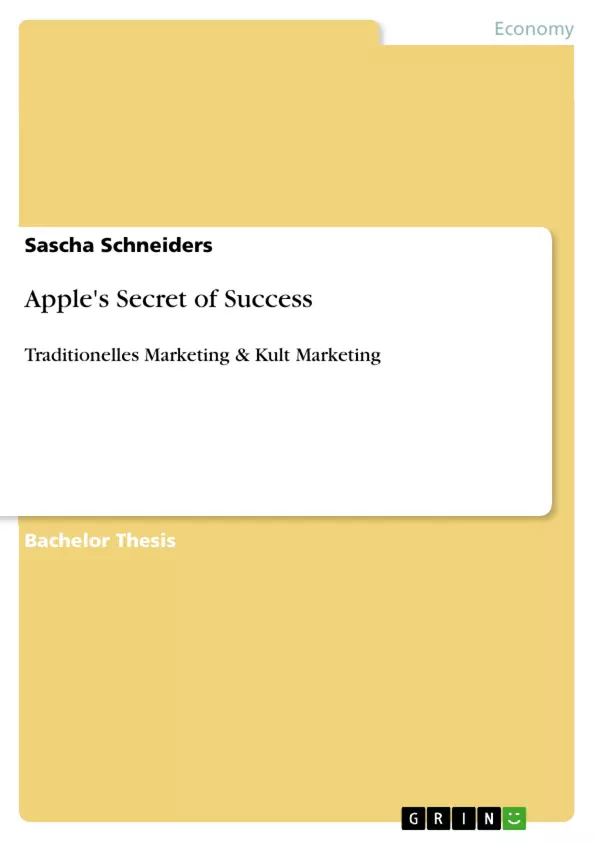ABSTRACT
There is possibly no other company which is so casual and at the same time so powerful as the computer and entertainment manufacturer Apple. The company controls the online-music market, the market for portable music players and is now capturing the high-tech mobile phone market. Apple moves into new electronic markets with strong competitors, in order to monopolise them just a short time later.
The CEO, Steve Jobs, has brought a brand into being that is different and at the same time mainstream. A strong magnetic brand which yields more influence in people’s life than one would care to admit. This is absolutely the reason why every company in the world wishes for a strong magnetic brand which can be defined as a “CULT BRAND”. They get repeatedly chosen over the competition. They bring higher prices than the competition. And if they are a strong enough brand their customers not only use their products, but evangelize them to the world.
This project aims to analyze Apple’s marketing activities in order to figure out, what makes this company so successful. It adds to the traditional marketing theory, the new theory of “cult marketing” because traditional marketing delivers no approach to explain the behavior of cult brands.
The phenomena of a Cult Brand are comparable to the patterns of a religion and Apple as well has strong believers. When it comes to their favorite brand, they enjoy telling who ever will listen how great it is and why they love it so much. People are camping in front of Apple’s stores just to get their latest innovative product. And if their Messiah, Steve Jobs, enters the stage to introduce a new product to thousands of viewers, he brings the house down.
- Citation du texte
- Sascha Schneiders (Auteur), 2010, Apple's Secret of Success, Munich, GRIN Verlag, https://www.grin.com/document/155118



